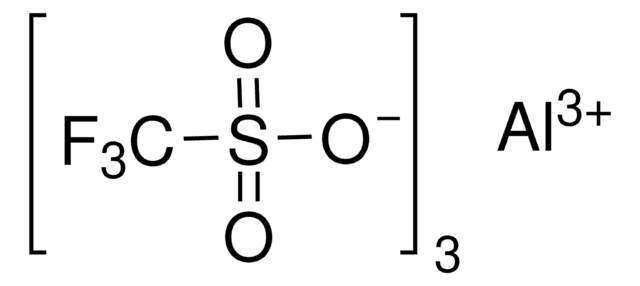587583
Zinc phosphate
99.998% trace metals basis
Synonym(s):
Pigment White 32, Trizinc diphosphate, Zinc orthophosphate
About This Item
Recommended Products
Assay
99.998% trace metals basis
form
powder and chunks
reaction suitability
reagent type: catalyst
core: zinc
impurities
≤25.0 ppm Trace Metal Analysis
mp
900 °C (lit.)
solubility
H2O: insoluble(lit.)
density
4.0 g/mL (lit.)
SMILES string
[Zn++].[Zn++].[Zn++].[O-]P([O-])([O-])=O.[O-]P([O-])([O-])=O
InChI
1S/2H3O4P.3Zn/c2*1-5(2,3)4;;;/h2*(H3,1,2,3,4);;;/q;;3*+2/p-6
InChI key
LRXTYHSAJDENHV-UHFFFAOYSA-H
Looking for similar products? Visit Product Comparison Guide
Signal Word
Warning
Hazard Statements
Precautionary Statements
Hazard Classifications
Aquatic Acute 1 - Aquatic Chronic 1
Storage Class Code
11 - Combustible Solids
WGK
WGK 2
Flash Point(F)
Not applicable
Flash Point(C)
Not applicable
Personal Protective Equipment
Regulatory Listings
Regulatory Listings are mainly provided for chemical products. Only limited information can be provided here for non-chemical products. No entry means none of the components are listed. It is the user’s obligation to ensure the safe and legal use of the product.
PDSCL
Deleterious substance
PRTR
Class II Designated Chemical Substances
ISHL Indicated Name
Substances Subject to be Indicated Names
ISHL Notified Names
Substances Subject to be Notified Names
JAN Code
587583-5G:4548173218175
587583-BULK:
587583-VAR:
587583-25G:4548173218229
Certificates of Analysis (COA)
Search for Certificates of Analysis (COA) by entering the products Lot/Batch Number. Lot and Batch Numbers can be found on a product’s label following the words ‘Lot’ or ‘Batch’.
Already Own This Product?
Find documentation for the products that you have recently purchased in the Document Library.
Customers Also Viewed
Articles
Colloidal quantum dots (CQDs) are semiconducting crystals of only a few nanometers (ca. 2–12 nm) coated with ligand/surfactant molecules to help prevent agglomeration.
Our team of scientists has experience in all areas of research including Life Science, Material Science, Chemical Synthesis, Chromatography, Analytical and many others.
Contact Technical Service











